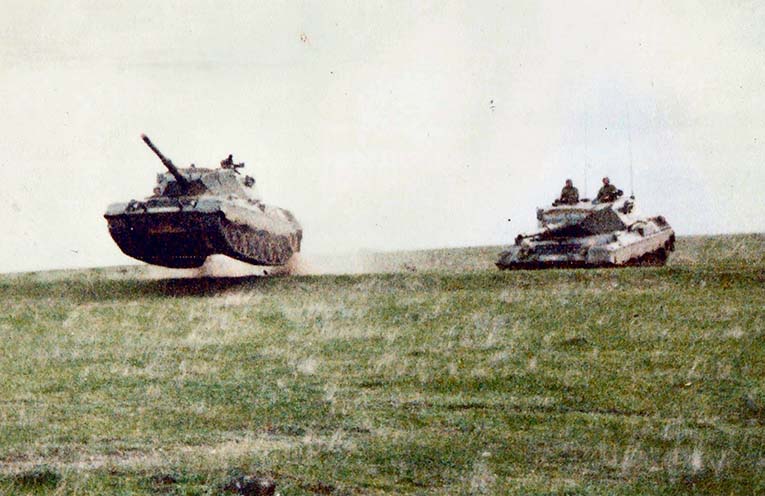
TEA Gardens RSL sub-Branch recently welcomed new Honorary Secretary Chris Fredericks, who has spoken with NOTA about his experiences, describing himself during his period in the army as a ‘Cold War warrior’.
“We served in between Vietnam and the more recent wars overseas, which meant a lot of training – someone once told me ‘never join a peace-time army’, and I soon understood why,” Chris explained.
Joining in 1976, Chris followed his father, who had served 49 years in the Medical Corps, including during WWII.
Chris was part of the 4 Troop A Squadron 1st Armoured Regiment, the ‘tankies’.
To the layperson, that means he worked with and drove tanks, including the post-WWII era British Centurions and Cheiftains, and then 1970s-era German Leopards, as well as armoured personnel carriers and many other heavy vehicles.
Chris has vivid memories of the training at ‘Puckapunyal Peaks’.
“(It was) a 320 km run over all the mountains down there, carrying full battle kit (60kgs), firearms (including an SLR), 16-person teams with one stretcher, a .50cal and a Charlie Gustaf recoilless gun.
“We got two weeks to complete it.
“Most did it within seven to ten days, and it included tests of mine warfare skills, first aid skills, infantry tactics, and also NBC (Nuclear/Biological/Chemical) warfare suits, which were hell to wear.”
The Australian Army posted Chris on exchanges to the UK and to Osnabruck, Germany, where he worked as a driver, operator, gunner, crew commander, corporal, and troop sergeant.
As a tank commander in Germany, Chris recalled one exercise on a tank gunnery range, where he and his crew showed up the British officers.
“Australian R Squadron was in competition against the best tank gunnery troop in the British Army at the time, using Chieftain tanks, and we beat them!”
“Their gunners were trained for 3000m range, but we could hit at 3500 km, so we eliminated all the targets before they even acquired them.”
After leaving the army due to atrial fibrillation complications, Chris later joined the Australian Federal Police, where he used his skills on several missions, including the bodyguarding of visiting VIPs.
“Close Personal Protection (CPP) for names like the Queen, and a few international Presidents, including Bush Senior, and many ambassadors from countries with combative histories, like around the Middle East,” Chris said of his experience.
“It is nothing like you see in the movies, there is a lot more that goes on with CPP, most of which you would never notice.”
By Thomas O’KEEFE
